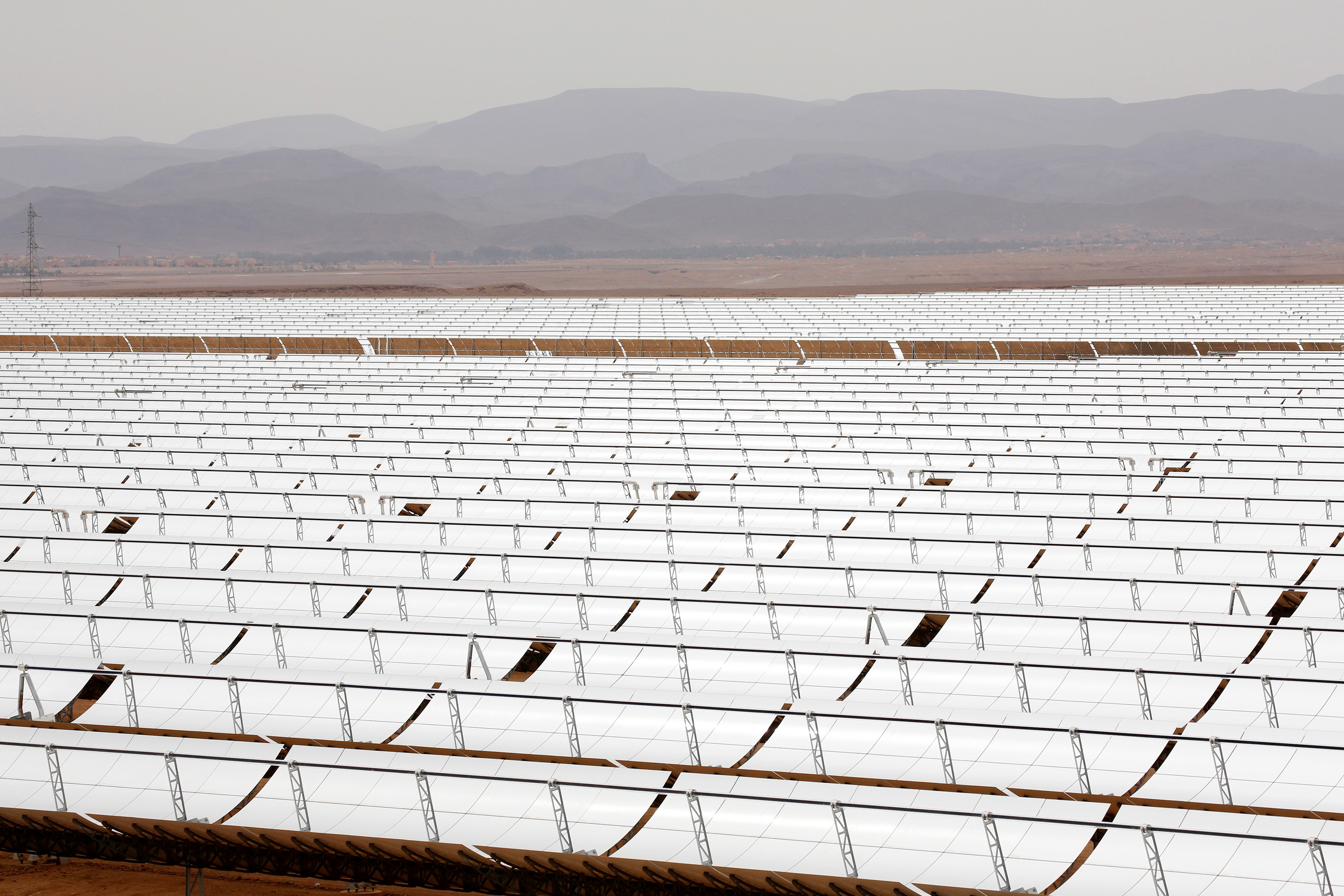Image: A thermosolar power plant is pictured at Noor II near the city of Ouarzazate, Morocco, November 4, 2016. REUTERS/Youssef Boudlal
By Alister Doyle
OUARZAZATE, Morocco (Reuters) – On the edge of the Sahara desert, Morocco is building one of the world’s biggest solar power plants in a project largely funded by the European Union.
It is a hard success for other African nations to match as they seek to implement a new global deal to combat climate change.
The huge 160-megawatt first phase of the Noor plant near the town of Ouarzazate contrasts with efforts by some other nations focused on tiny roof-top solar panels to bring power to remote rural homes.
At Noor, curved mirrors totaling 1.5 million square meters (16 million square feet) – the size of about 200 soccer pitches – capture the sun’s heat in the reddish desert.
Morocco is showcasing Noor before talks among almost 200 nations in Marrakesh about implementing a global deal to combat climate change that entered into force on Nov. 4 – a day when the Saharan sky was unusually overcast with spots of rain.
“We hope we can be an inspiration,” Mustapha Bakkoury, head of the Moroccan Agency for Solar Energy (Masen), told Reuters. Many African nations are pushing to boost economic growth to end poverty, while seeking greener energies.
The gleaming concentrated solar power plant is not economically competitive with cheaper fossil fuels, but is a step to develop new technologies as prices for solar power fall sharply.
“Unfortunately for many, it’s thought that renewables are to have a light bulb or light a school … This is to get away from the caricature of renewables,” Bakkoury said.
Morocco aims to get 52 percent of its electricity from clean energy such as wind and solar by 2030, up from 28 percent now.
Once completed, Noor will cost 2.2 billion euros ($2.45 billion) and generate 580 MW, enough power for a city of almost 2 million people. Morocco aims to expand at other desert regions to 2 gigawatts of solar capacity by 2020 at a cost of $9 billion.
On the sprawling site, south of the snow-capped Atlas Mountains, workers clear ground with diggers, build concrete pillars or clean off Saharan dust that dims sunshine. In Arabic, Noor means light.
By contrast in East Africa, M-KOPA Solar has installed 400,000 tiny rooftop solar panel systems costing $200 each on homes in the past five years to provide power for light bulbs and a radio. That completely by-passes the grid.
M-KOPA Chief Executive Jesse Moore, whose company focuses most on Kenya, Tanzania and Uganda, said rooftop solar systems were a breakthrough for Africa, where half the 1.2 billion people lack electricity.
He noted that Tesla founder Elon Musk was trying to sell solar systems to U.S. homes.
“Elon Musk is trying to get people to leap off the grid in California. Over here on the other side of the planet this is happening already,” he told Reuters.
Unlike Morocco, some nations in Africa find it hard to attract investors to green projects, part of global efforts to limit climate change and more floods, heat waves and droughts that are a big threat to Africa.
“Morocco is particularly suited for a large-scale project. It may not be suitable for all other countries,” Roman Escolano, vice president of the European Investment Bank (EIB), told Reuters.
The European Union including the EIB has funded about 60 percent of Noor. Masen issued Morocco’s first green bond, of 106 million euros, on Friday to help finance Noor.
Apart from sunshine, Morocco has had relative political stability in recent years and a predictable legal and banking system, helping it attract investors.
Even so, Morocco has had a week of street protests after the death of a fishmonger, crushed to death in a garbage truck in a confrontation with police, in one of the biggest and longest challenges to authority since the 2011 Arab Spring.
Unusually for a desert, Morocco has water from the Atlas mountains to help clean off dust. And in some countries, power lines from remote parts of the Sahara could be vulnerable to attacks – Noor’s pylons have red spikes to discourage intruders.
At Noor, the sun’s rays bounce off the mirrors, heat a fluid that in turn heats a vast tank of molten salt that can drive a turbine to generate electricity even after dark.
(Editing by Stephen Powell)
Copyright 2016 Thomson Reuters. Click for Restrictions.


